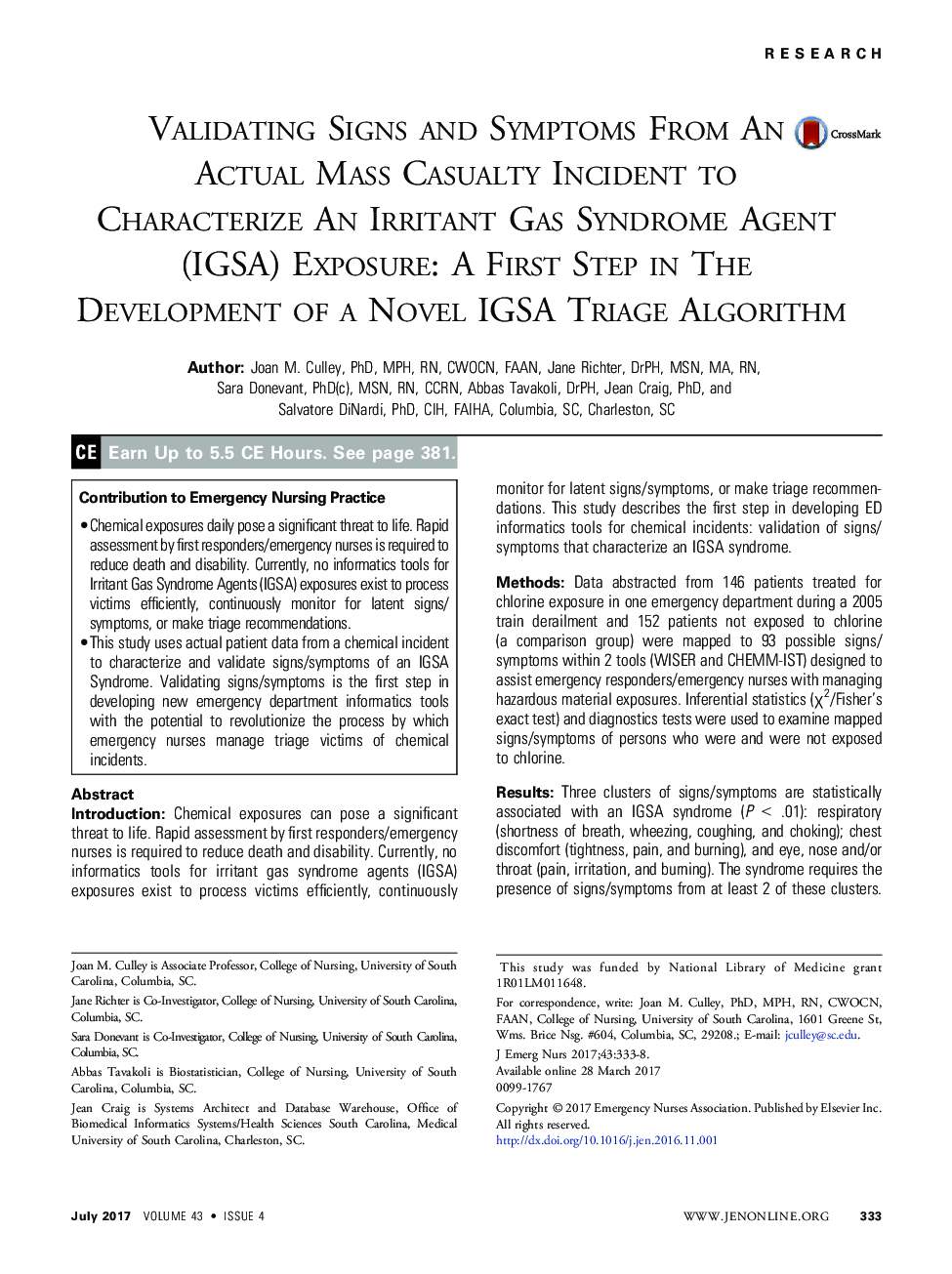| کد مقاله | کد نشریه | سال انتشار | مقاله انگلیسی | نسخه تمام متن |
|---|---|---|---|---|
| 5563189 | 1403457 | 2017 | 6 صفحه PDF | دانلود رایگان |
Contribution to Emergency Nursing Practice
- Chemical exposures daily pose a significant threat to life. Rapid assessment by first responders/emergency nurses is required to reduce death and disability. Currently, no informatics tools for Irritant Gas Syndrome Agents (IGSA) exposures exist to process victims efficiently, continuously monitor for latent signs/symptoms, or make triage recommendations.
- This study uses actual patient data from a chemical incident to characterize and validate signs/symptoms of an IGSA Syndrome. Validating signs/symptoms is the first step in developing new emergency department informatics tools with the potential to revolutionize the process by which emergency nurses manage triage victims of chemical incidents.AbstractIntroductionChemical exposures can pose a significant threat to life. Rapid assessment by first responders/emergency nurses is required to reduce death and disability. Currently, no informatics tools for irritant gas syndrome agents (IGSA) exposures exist to process victims efficiently, continuously monitor for latent signs/symptoms, or make triage recommendations. This study describes the first step in developing ED informatics tools for chemical incidents: validation of signs/symptoms that characterize an IGSA syndrome.MethodsData abstracted from 146 patients treated for chlorine exposure in one emergency department during a 2005 train derailment and 152 patients not exposed to chlorine (a comparison group) were mapped to 93 possible signs/symptoms within 2 tools (WISER and CHEMM-IST) designed to assist emergency responders/emergency nurses with managing hazardous material exposures. Inferential statistics (Ï2/Fisher's exact test) and diagnostics tests were used to examine mapped signs/symptoms of persons who were and were not exposed to chlorine.ResultsThree clusters of signs/symptoms are statistically associated with an IGSA syndrome (P < .01): respiratory (shortness of breath, wheezing, coughing, and choking); chest discomfort (tightness, pain, and burning), and eye, nose and/or throat (pain, irritation, and burning). The syndrome requires the presence of signs/symptoms from at least 2 of these clusters. The latency period must also be considered for exposed/potentially exposed persons.DiscussionThis study uses actual patient data from a chemical incident to characterize and validate signs/symptoms of an IGSA syndrome. Validating signs/symptoms is the first step in developing new ED informatics tools with the potential to revolutionize the process by which emergency nurses manage triage victims of chemical incidents.
Journal: Journal of Emergency Nursing - Volume 43, Issue 4, July 2017, Pages 333-338
